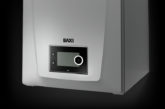
Martyn Bridges, Director of Technical Communication and Product Management at Worcester Bosch, discusses why the entire the heating system should be within the scope of building regulations.
One of the interesting positions we are facing currently is that parts of the heating system are covered by the building regulations, but not the entire installation process.
While the debate surrounding heat pumps and boilers plays on the government’s mind through the training and trial phase of approvals, the building regulations are facing scrutiny from heating providers to summarise the entirety of the heating system in the scope of their regulations.
What is covered?
While several aspects of the heating system are included in the building regulations, the entire heating system still remains out of scope.
The installation and commissioning of boilers are covered within the scope of building regulations and are dealt within the Domestic Heating Compliance Guide, which will soon be absorbed into the actual building regulation document.
Hot water storage cylinders are covered by the instillation, all covered by part G of the building regulations.
Current changes being proposed, which when approved, are that thermostatic radiator valves (TRV) or self-regulating devices will be required on every radiator fitted.
The system flushing, cleansing and treatment is also covered within the building regulations, as referenced in BS7593, the comprehensive document covering it.
All of the above is including in regulations but not the entire heating system, which certainly seems out of date and given imminent targets (and new technologies) are on the horizon.
What should be included?
The single biggest factor surrounding the efficient performance of a heat pump is the heating system.
If a radiator’s pipework and the general components of the system are correct, the efficiency and the comfort levels of a home will be at a high level. On the flipside, if there are issues then the negative impact can also be high.
Boilers, in contrast, tend to run through most issues and will generally warm the house even if the radiators and pipework aren’t perhaps as good as they should be.
To avoid such issues, when work is undertaken on a heating system, other areas should be assessed before an installer changes a boiler for either another boiler or a heat pump.
Entire room by room heat loss calculations should be looked at to ascertain whether existing radiators are big enough to run on the lower flow temperatures of heat pumps. Additionally, while intending to understand whether the pipework connecting to both the radiators and flooring is large enough to cope with the increased velocity that a heat pump operates at.
If both factors are incorrect then complaints will be received from customers, either due to running costs, comfort level problems or a mixture of both.
My suggestion would be, the simplest way to make sure these things take place, other than going down the MCS route, would be to bring the entire heating system under the scope and cover of the building regulations.
Bringing the old into the new
It isn’t uncommon to see a heating system at 30 to 40 years old and over the years having a second or third new boiler connected to it. Yet other parts of the system have not seen any upgrades or replacements, let’s say for this example, radiators.
Parts of the industry are planning to make applications to the government for radiator scrappage schemes. Although many radiators today are more efficient than half a century ago – thanks to being generally lower in water content, better designed and equipped with better convection currents – there is still the risk that they will irradicate over time.
Perhaps it is time to look at the output side of the heating system, while siting newer radiators in different positions from where they were initially installed. Something that would need to be considered in regulation.
Heating systems can be altered by home modifications, or furniture relocations making convection currents difficult to penetrate and as a result not warming the room, or even the home, correctly.
The result of obstructing convection currents causes us to turn the temperature of the boiler up to counteract the issue, which subsequently is counterproductive when in the interest of cost effectiveness and home comfort.
Another reason then why the entire heating system should be factored into the building regulations, particularly as pipework and radiators may need to be changed or adapted to accept a heat pump as the energy source. If we have a bit more consistency, instead of picking and choosing different elements of a system, then we will be much better equipped to accept new technologies and ultimately help reduce carbon emissions whilst not paying for it with home comfort.













